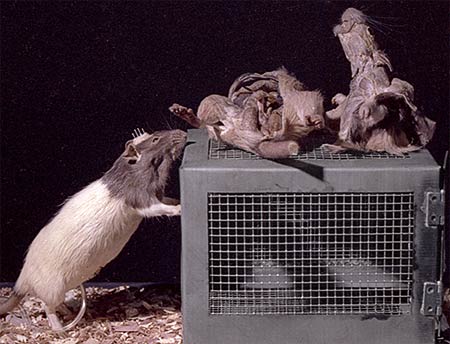Years earlier, while I was still at university, a professor took our entire class to see his research lab. During the visit he showed us a caged rat with electrodes sticking out of its head. He explained that the electrodes sent signals from the rat's brain to a monitor that graphed the rat’s brainwaves.
He said he could change the rat’s brainwaves by simply switching the cage light on and off. To prove it, he turned the light on and off. But nothing happened. The rat’s brainwaves didn't change. So he turned the light off and on several more times, but to no avail. The rat’s brainwaves never changed.
After a few more attempts the professor announced, "Hmm. This usually works. Something must be wrong with the rat." Whereupon he led us back to our classroom where he talked about something else.
To commemorate this experience, I bought two embalmed rats from an educational supply company, freeze-dried them and arranged them in a sculpture.

The rat on the left was similar to the one I had seen in the research lab. Electrodes were implanted into its head and a plastic tube came out of its stomach.
On top of the cage was another freeze-dried rat body that I had dissected to reveal its muscles.

By the way, I was used to dissecting dead animals. As a young child I had watched Canadian hunters butcher deer in their driveways. Later in high school, I was taught how to dissect embalmed animals in biology classes, and during my years at university I worked part-time at animal hospitals, where I often assisted with surgeries and autopsies.
© Rick Gibson